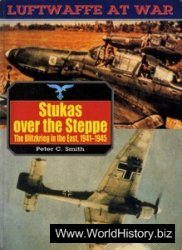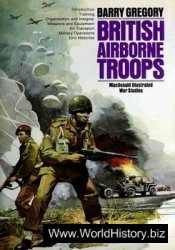The 1970s and 1980s were dramatic times for British archaeology, with the rise of modern rescue archaeology, and the emergence of both processual and post-processual theoretical approaches in Britain. But in many ways this was a slower, inward-looking period for British post-Roman archaeology, which came to be split between three period divisions - ‘medieval archaeology’ (c. AD 450-1450), ‘post-medieval archaeology’ (c. AD 1450-1750), and ‘industrial archaeology’ (c. AD 1750-1950). Despite such period distinctions, post-medieval and industrial archaeology saw a significant degree of consensus in relation to subject-matter, research agendas and disciplinary identity. However, this consensus saw the earlier efforts toward consolidation now giving way to a disciplinary nervousness. The innovation of Hoskins, Beresford, and Hurst was replaced by purely descriptive studies that sought to provide material to contribute to interpretations drawn from a previous generation of economic and social historians. Thus, David Crossley’s Post-Medieval Archaeology in Britain (1990) and the Society for Post-Medieval Archaeology (SPMA)’s Research Priorities for Post-Medieval Archaeology (1988) focused upon the field’s potential, through synthesis of the field’s diverse range of data, to add to our understanding of early modern industrial and agricultural production, and demography. Meanwhile the third edition of Neil Cossons’ BP Book of Industrial Archaeology (1987) and the Association for Industrial Archaeology’s Industrial Archaeology: Working for the Future (1991) were not complemented by other studies that sought to expand the archaeology of more recent periods beyond the study of the remains of eighteenth - and nineteenth-century industrialization. The pages of Post-Medieval Archaeology and Industrial Archaeology Review were filled with highly detailed and descriptive archaeological reports, and apart from occasional contributions to county archaeological journals the results of British historical archaeology were virtually never published outside these two publications.
Despite these limitations, the 1970s and 1980s represented a crucial period in some respects. Through the work of many dedicated researchers, the earlier efforts toward consolidation were realized. These are summarized in the following.
Post-Medieval Material Culture Studies
During the 1970s and 1980s, the majority of postmedieval archaeology was focused upon material culture studies developed by museum-based archaeologists. In the place of previous ‘connoisseur’ studies of elite material culture, especially glassware, precious metalware, and ceramics, usually written for the antiques trade, much-needed typological sequences for post-medieval British and imported ceramics, clay pipes, glass, and to a lesser extent building materials and metalwares, were developed. These studies were complemented by the excavation of the sites of industrial production: ironworks, the production sites of nonferrous metals such as lead, tin, copper, copper alloys, ceramics, and glassworks (Figure 1). Publications such as Adrian Oswald’s Clay Pipes for the Archaeologist (1975), Peter Davey’s monograph series The Archaeology of the Clay Tobacco Pipe (1979-present), Richard Coleman Smith and Terry Pearson’s Excavations in the Donyatt Potteries (1988), and Jacqueline Pearce’s Border Wares (1993) provided crucial tools with which British historical archaeology could engage with material culture in a more sophisticated manner.
Historical Landscape Archaeology
While the simultaneous interest in medieval and early modern material became less common in most subfields of British historical archaeology in the 1970s and 1980s, it was retained in historical landscape archaeology. Here, the landscape was seen as a ‘palimpsest’ - akin to a document partially effaced and written over again many times. Thus, the contemporary nature of landscape archaeology was underlined, rather than the isolated study of particular chronological periods. In Scotland the term ‘Medieval or later Rural Settlement Studies’ was generally used, but in practice was characterized by an emphasis upon the medieval rather than the post-medieval. In England, the work of Christopher Dyer and Joan Thirsk at the Centre for English Local History at Leicester University, Mick Aston in the Department of Continuing Education at Bristol University, and later Tom Williamson at the University of East Anglia, was all influential. The perspectives of landscape historian Oliver Rackham, especially his History of the Countryside (1986) which emphasized the importance of fieldwork in the study of landscape, also influenced historical landscape archaeology. Such work led to an increasingly wide range of nonintrusive field methodologies, incorporating air photograph interpretation, geophysical survey, and more controversial techniques such as M. D. Hooper’s approach to dating medieval and post-medieval hedgerows by

Figure 1 The remains of a crucible furnace from the former Brunswick Steel Works in Sheffield. A row of melting holes and blocked-up flues are visible. After recording the furnace was reburied and protected in situ. Courtesy of Archaeological Research Consultancy at the University of Sheffield.
Assessing the number of shrub species present within them. The journals Landscape History (from 1979) and Rural History (from 1989) provided important venues for the development of this field.
Historical landscape archaeology was mainly focused upon agrarian landscapes - the study of ‘river and wold’ - and especially upon the evidence of agricultural ‘improvement’ and the long-term history of landscape enclosure. However, it also increasingly encompassed the studies of urban topography and the archaeology of parks and gardens. Mick Aston and James Bond’s The Landscape of Towns (1976), for example, ranged from prehistoric and Romano-British contexts to Victorian and twentieth-century towns, and even to ‘the future of towns’. Other researchers began to use the techniques of landscape archaeology to study British battlefields, leading to work such as Glenn Foard’s 1995 study of the site of the Battle of Naseby (1651) in Northamptonshire. Meanwhile, gardens archaeology emerged as a new field of enquiry during the 1980s, especially in the context of historical restoration. Particularly influential were Chris Currie and Martin Locock’s excavations at Castle Bromwich Hall Gardens in Birmingham in the late 1980s (Figure 2), and Brian Dix’s excavations in the early 1990s in advance of the restoration of the Privy Garden at Hampton Court (built 1701-2).
Industrial Archaeology
From the mid-1950s, Industrial Archaeology had developed in parallel with Local Studies: also through the Workers’ Educational Association and university extra-mural departments, but through a largely separate community of enthusiasts from a different range of backgrounds - craftsmen, industrial managers, and particularly engineers interested in the history of their own industries. The 1970s and 1980s saw an increasingly wide range of work in industrial archaeology, particularly in the publication of regional surveys of industrial remains, and field studies of the production sites for items of material culture regularly excavated by archaeologists (ceramics, glass, metalwork, etc.). Industrial archaeologists also increasingly examined other industrial sites such as coal and tin mines, textile mills, and transportation networks such as roads, canals, and railways (see Industrial Archaeology). Landscape approaches were also extended into the archaeology of industrial landscapes through Jeremy Lowe and Martin Lawlor’s 1982 study ‘Landscapes of the iron industry’ at Blaenavon in Gwent, Wales, Judith Alfrey and Kate Clark’s ‘Nuffield Survey’ of the Ironbridge Gorge in Shropshire during the late 1980s, and by Marilyn Palmer and Peter Neaverson’s Industrial Landscapes of the East Midlands (1992). This work has been increasingly

Figure 2 Gardens archaeology at Castle Bromwich, Birmingham. Photograph: Chris Currie.
Influential. For example, in the 1990s in Wales, Stephen Hughes’ work with the Welsh Royal Commission demonstrated the potential of the landscape archaeology of industrial landscapes through his work in the lower Swansea Valley in South Wales - this ‘Copperopolis’ developed during the eighteenth and nineteenth centuries, and ranged from industrial copper works which included a massive smelting hall known as the ‘Great Workhouse’, to other industrial processes, including porcelain manufacture, and roadways, wooden railways, and a commercial wharf.
Buildings Archaeology
The archaeological study of post-1500 buildings also developed during this period. Vernacular architectural studies were catalyzed by Ronald William Bruns-kill’s Illustrated Handbook of Vernacular Architecture (1970) and Eric Mercer’s Vernacular Houses (1975). Scholars such as J. T. Smith examined the transition from medieval open halls to new post-medieval forms, inspired especially by W. G. Hoskins’ (1953) notion of a ‘Great Rebuilding’: a theme developed upon by Matthew Johnson’s study of Housing Culture: Traditional Architecture in an English Landscape (1993). Elsewhere in the UK, the archaeological study of many other kinds of buildings - from polite houses to institutions such as workhouses, schools, hospitals, and military structures - developed. The study of military architecture also developed, especially after the formation of the Fortress Study Group in 1975. The potential of studying workers’ housing was also increasingly recognized, especially in Royal Commission volumes such as Roger Leech’s Early Industrial Housing: The Trinity Area of Frome, Somerset (1981) and Lucy Caffyn’s landmark 1986 study of Workers’ Housing in West Yorkshire. Temporary housing was also examined, as with Michael Morris’ study of the ephemeral traces of the navvy huts used by road, railway, and canal construction workers (Figure 3).
Church Archaeology
While the archaeology of churches and churchyards grew in importance during the 1970s, especially through the efforts of Warwick Rodwell and Richard Morris, a focus upon medieval, rather than postmedieval, remains continued to characterize the field. A notable exception was the studies of gravestones across Britain developed by Harold Mytum. The archaeology of post-medieval death and burial was also generally neglected, with cemeteries usually cleared without appropriate archaeological mitigation. This began to change during the 1980s, an important watershed being the Museum of London excavation directed by Jez Reeve of 968 eighteenth-and nineteenth-century burials from the crypt of Christ Church, Spitalfields in London between 1984 and 1986. As Margaret Cox has suggested, the project raised crucial ethical, bureaucratic and intellectual issues around the treatment of the dead in the recent past: issues which have informed the subsequent development of forensic archaeology (discussed below).

Figure 3 Collapsed door frame from a temporary navvy structure from construction of the Woodhead Tunnel (part of the Sheffield to Manchester railway) between 1839 and 1845. Figure 3 in Morris M (1994) Towards an archaeology of navvy huts and settlements of the industrial revolution. Antiquity 68: 573-584. Courtesy of Antiquity Publications Ltd.
Historical Maritime Archaeology
In the rapid development of maritime archaeology in Britain from the 1970s, the study of material dating from after AD 1500 has played an important role. In Scotland, two underwater archaeology projects played a central role in the development of scientific approaches to wreck site formation processes: Keith Muckelroy’s excavations of the Kennemerland, a Dutch East Indiaman wrecked off the Shetland Islands (conducted between 1973 and 1977), and Colin Martin’s excavations of the Dartmouth, a British frigate wrecked off the Isle of Mull in the Inner Hebrides. The most high-profile and intensive underwater archaeology project ever undertaken in Britain was also a historical maritime archaeology project: the raising in 1982 of Henry VIII’s warship the Mary Rose (which was built in 1509-1510, and sank in the Solent on the south coast of England in 1545). The Mary Rose project not only yielded crucial information about sixteenth-century ship construction but also many well-preserved personal and domestic items of material culture. Meanwhile, scholars such as Sehn McGrail and Basil Greenhill used British and Irish historical ethnographic and documentary material to examine the ethnoarchaeology of shipbuilding traditions. The study of terrestrial maritime landscapes also developed, especially through Gustav Milne’s seminal excavations of the waterfront of medieval and post-medieval London for the Museum of London in the mid-1970s and late-1980s.




 World History
World History









